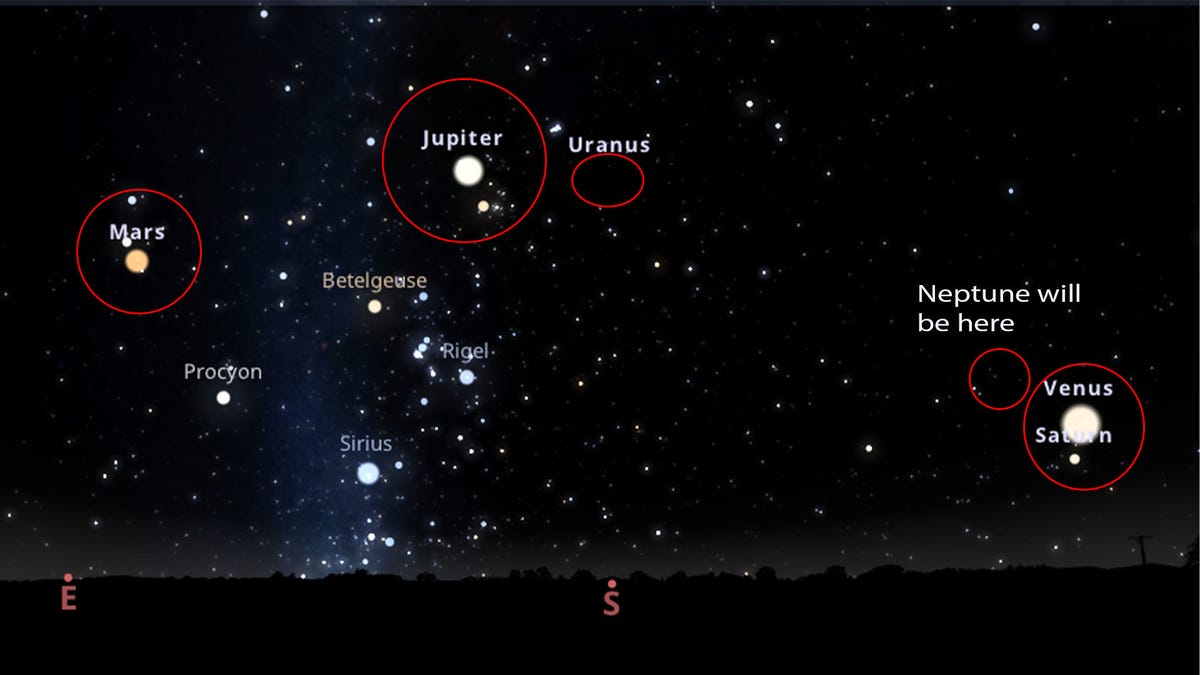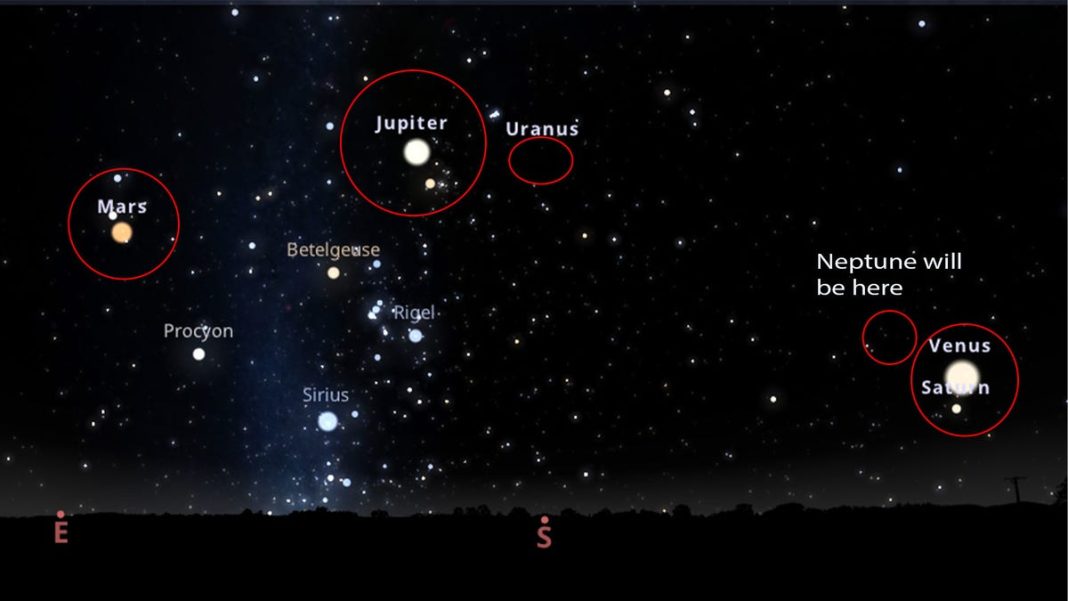In the year 2025, we’ll witness a rare and remarkable event in our universe: a planetary alignment which already has the science geeks excited. While the phenomena is set to make celestial history, it is also surrounded by a bunch of misconceptions. Along with notifying you about the exact time and date of the rare alignment, this article will also educate you about its scientific background without any fancy jargon. So, get ready and dust off your binoculars as they are about to come in handy!
Exact Date & Time Of Planets’ Alignment
On February 28, 2025, the 7 planets; Mars, Jupiter, Uranus, Neptune, Venus, Saturn, and Mercury will all line up, showcasing the rare phenomena of planetary alignment.
Many other sources are referring to the same event as planetary parade; which in simple words refers to our solar system’s planets becoming visible in the sky. Most of the people living in USA, Canada, and Mexico will be able to view it without any hindrances. It will last for the entirety of January and will continue till February.
Prior to the 7 planets alignment, on January 21, 2025, the 6 planets will have already aligned. These planets include; Mars, Jupiter, Uranus, Neptune, Venus, and Saturn. Mercury will join the rest in February. This phenomena in which 6 planets align in the night sky is known as the large alignment.

The ideal time to observe planets is shortly after sunset. Around this time the sky will be the perfect kind of dark, allowing you to view the planets.
If you’re wondering why Mercury will appear later, here’s the explanation: its rapid orbit around the Sun causes it to show up in the sky at a later time.
In the grand year of 2025, we are expecting 3 such similar cases. Here’s a list for you to keep a track of:
- January 21, 2025: alignment of Mars, Jupiter, Uranus, Neptune, Saturn, and Venus.
- February 28, 2025: alignment of Saturn, Mercury, Neptune, Venus, Uranus, Jupiter, and Mars
- August 11, 2025: alignment of Mercury, Venus, Jupiter, Uranus, Neptune, and Saturn.
Do I Need Technical Equipment To Be Able To View Planetary Alignment?
Mars, Jupiter, and Venus will be easy to spot for the sky gazers, while Saturn will require a little more effort. To view Uranus and Neptune, optical aid is necessary, and Mercury will be the hardest to catch because of its close proximity to the Sun.
To make your experience worthwhile, make sure you have the astronomy apps on the get go. Familiarize yourself with the star maps for better guidance. Most importantly, choose a designated area with minimal light pollution. Because the less the interference, the better your view of the planetary alignment will be.
The time for viewing these planets in the night sky differs due to different locations. A useful tool called ‘Time and Date‘ will notify you about the rise and set times of the different planets. It is advisable to go through these details a few days prior to the rare planetary alignment. Another tool ‘Stellarium‘ will further assist you in determining the exact position of the planet. An app called ‘Sky Tonight’ will provide you with a magnificent map of stars above you.
The planets of our solar system never align in a single straight line, because this is impossible due to their varied orbits. Instead, they are viewable as being close to each other in the sky. This phenomena occurs when planets are positioned on the same side of the Sun.
Well, that was everything you needed to know about the upcoming rare alignment of the 7 planets in the sky. Stay tuned for more such space-related news!

